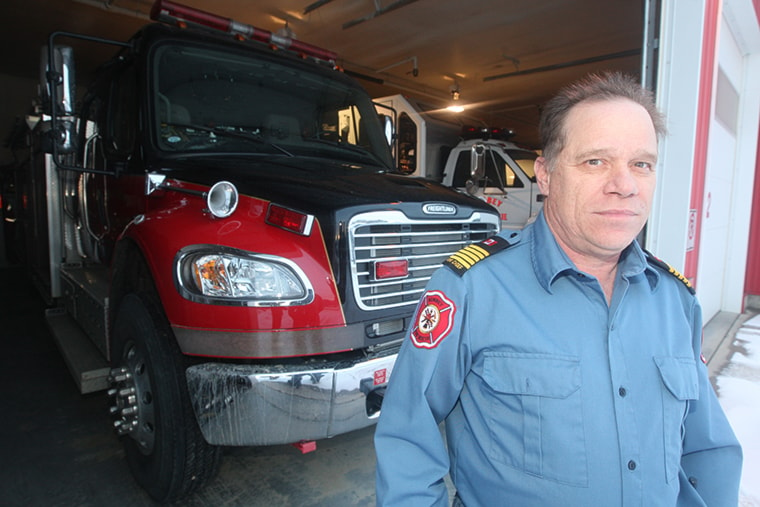Increasingly lengthy ambulance waits are too often leaving Rimbey volunteer firefighters to respond to medical calls they aren’t trained for, says the fire chief.
John Weisgerber said often Rimbey ambulances are called away to Red Deer or other communities.
“It’s regular for one unit to be gone all day, for sure,” Weisgerber said. “If the other unit has to go out on a call then suddenly we’ve got nothing.”
“We do way more ambulance calls than we’ve ever done,” he said.
Sometimes, there are ambulance staff around who can join firefighters on a call, but too often the volunteers must go on their own.
And when they get there they are limited in what they can do. Rimbey’s volunteers have first aid and CPR training but not more advanced medical skills.
“We’re basically making decisions on what we should be doing. And that’s not fair to the patient and that’s not fair to the volunteers.”
Weisgerber said some volunteers are already screening their calls to avoid responding to situations they are not trained to handle. He’s worried that he will start losing volunteers.
“The province isn’t willing to even consider that that’s something that’s going on, but it’s happening.
“There’s lots of (volunteers) saying I’m not trained to do that. I’m not going to do that — period.”
Weisgerber said the problems started when Alberta Health Services went to its borderless system two years ago. Ambulances are still located in each community, but they are shifted about more often to meet demands in other municipalities.
The situation is getting “progressively worse,” he said. “As the units are needed elsewhere, there’s less of them here.”
Rimbey isn’t the only community that has had ambulance concerns.
In Olds, the number of calls rose so sharply after Alberta Health Services took over that something had to be done.
Fire Chief Lorne Thompson said to reduce some of the workload on volunteers, guidelines were set with the dispatch centre outlining what calls the fire department will respond to.
“We don’t run out on every call, we only go on specific types,” he said of the system, which was introduced last summer.
“Before this we were going to all these medical assists, which was too much.”
In town, the department will respond to life-threatening situations and in rural areas the range of calls they will take are a little broader. The department will also respond to any kind of call if requested by ambulance.
In January, a duty officer program was developed to have a veteran firefighter on call each day. They usually handle the medical assists with ambulances.
“We had to do that to manage this increase in call volume,” he said.
“We had to evolve in order to function.”
One issue that remains outstanding in the town is the response time for ambulances.
Coun. Mary Jane Harper said when ambulances were under local control, response times were carefully monitored to meet an accepted level of service.
Harper, who sits on the town committee that reviews fire department issues, said they don’t have solid numbers for response times under the new system “but we are hearing that the response times are very slow.”
Alberta Health Services has promised to provide information on response times and Olds and other communities in Mountain View County.
“But we’re still waiting to hear back.”
Lyle McKellar, executive director EMS Central Zone, acknowledged that in Olds call volumes was initially an issue.
“It’s really sorting out calls they are comfortable responding to.”
McKellar said he hadn’t heard from Rimbey about its specific concerns. But health officials want to meet with community and fire department representatives to discuss expectations and review issues such as medical first response by fire departments.
While some municipalities have complained ambulance response times are getting longer, Alberta Health Services’ data does not back up those claims.
Since the borderless system was introduced they have not seen a big variance in response times on high-priority calls, which involve life-threatening situations, he said.
In Rimbey, the average response time is eight minutes 13 seconds. Comparisons are not available with the previous provider because it was a private company with its own records.
However, McKellar does not see an eight-minute response as grounds for concern.
“In the Town of Rimbey, I would consider that a reasonable response time, absolutely,” he said.
McKellar said Alberta Health Services is reviewing community first response and how fire and ambulance work together and municipalities will have opportunity to raise their concerns.
“As things change and evolve it’s probably timely again that those conversations happen again with those municipalities,” he said.
pcowley@www.reddeeradvocate.com
